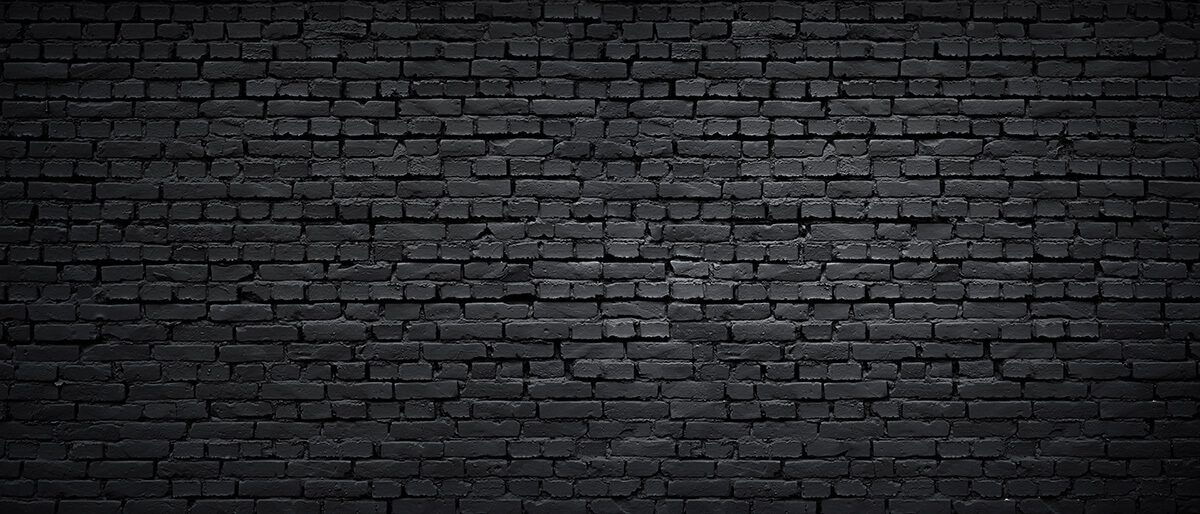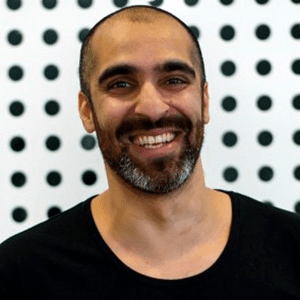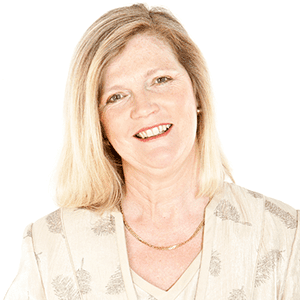

#12: Cultivating agile organisations – critical for businesses to survive and thrive in the coming decade
Maja Paleka reveals what organisations of the future will look like and how to get there.
She works to help shift the mindsets, capabilities and then behaviour of their people to support the new models they co-design. Ultimately, it is about creating workplaces of the future so that people, organisations and their communities can thrive.
The last five years has seen the ‘Future of Work’ become a topic of intense focus and speculation in the business world. Work environments, organisational structures and the motivations behind work have transformed. Leaders of the future will need to shift their focus to adapt to this changing environment.
For true agile work capability your team needs: Trust, Effective Communication and Measurable Outcomes.
Stephanie: My guest today is Maja Paleka, the co-founder and director of Juggle Strategies, a consultancy that works with organisations looking for better ways to work. She works with them to help shift the mindsets, capabilities, and then the behaviour of their people to support the new business models that they co-designed. Ultimately, Maja says it’s about creating workplaces of the future so that people, organisations, and their communities can thrive.
So a little bit of background about Maja, she likes to say that a long time ago she was an electrical engineer who loves to understand how things work. And through her career in various leadership roles, she turned that curiosity to human behaviour. So Juggle was born out of the realisation that we’re still trying to shift how we work through writing policies rather than approaching them like any other strategic imperative or change program. Great stuff. Lovely to have you here, Maja.
Maja: Lovely to be here. Thank you.
Stephanie: So today is Wednesday. This time last week, we were both at Brene Brown.
Maja: Yes, we were. It was amazing, wasn’t it?
Stephanie: Amazing. What was the highlight for you?
Maja: Oh that is really hard to say. I’d probably say that I’m looking at a lot of things now from the point of view of what we’re doing. So I was looking at it from the future of work, and the future of leadership, and what does that look like. And she is really good at nailing the fact that we can’t be the leaders of tomorrow where we’re trying to get the best out of our people and we’re trying to create places where we can be comfortable with ambiguity and change in everything else without getting stuck in the gooey human stuff. And she really was good at communicating sort of the business case I guess for it. I love how she said at one point, ‘If you think that this emotion stuff is not your job, you’ll have no job going forward.’
The other thing that she said that I also loved was the fact that she said, ‘Ask yourself whether you’re managing for a compliance or for a commitment.’
Stephanie: That was really good, wasn’t it?
Maja: That was massive.
Stephanie: So what about the bit where she had 4,000 people singing American Pie?
Maja: What a way to make us vulnerable hey?
Stephanie: It was… I thought, ‘I don’t even want to do this when she said stand up.’ I just wanted to say no. And it was so fun.
Maja: Yeah, it was amazing. I kept on asking myself how does someone keep someone engaged as a facilitator, and you know we facilitate all the time, for four hours almost?
Stephanie: Yeah, it was four hours.
Maja: And keep us engaged. And she did it so well, but that came right at the right time where I thought people were, ‘Okay, we’re three hours in. We’re getting a little bit tired,’ and got us up and got us disarmed because one of the things she asked later is to say,’How do you take a pose and say a close pose?’ And it was right after that. And I struggled. I actually couldn’t do that because she got me moving and she got me-
Stephanie: Smiling.
Maja: Smiling.
Stephanie: I just looked around and then the dancing after that. It was great. So I love that bit that you’ve picked up about managing for commitment over compliance. And I don’t want to make this whole conversation about my whole paradigm and how it needs shifting, how do leaders do that do you think? How do you they make that shift?
Maja: Yeah, it’s a really good question. I think this is what we got to start looking at in terms of what leadership is in itself, right? Is it the perennial kind of skillset of delivering numbers and delivering operational efficiencies or looking at the bottom line and getting from A to B which has been given to you by someone else? And if we’re still in that world, I sort of feel very very quickly we don’t move anywhere. We don’t innovate. We don’t change. Or do we go and we say, ‘No, actually what my job as a leader is to look at changes, look at ambiguity, and create a psychologically safe space for people to really bring themselves to work, to completely be here, and contribute, and collaborate?’ And then out of that comes magic.
So to me, a leader is someone who has to do both. And really we’re not going to get away from delivering our profit and delivering the bottom line. That’s not going to go away. But you have to be able to do that by actually tapping into your people rather than just executing on a plan. And you have to be able to create that space of… Well you start off by actually I think authenticity and vulnerability at yourself, so opening yourself up, not knowing the answers to everything and being very comfortable of saying that and then asking the questions. So going back to, ‘What do you think?’ And, ‘I actually don’t know the answer to that. I’m not really sure. We got to come up with that as a team. What do you guys think? And let’s try something. And if we fail, it’s going to be okay.’
Stephanie: How much of a shift is that approach that you’re talking about that sounds great, how much of a shift is that for the leaders that you work with?
Maja: I think a lot of people are realising the value of it. So many of us… I mean 4,000 people at Brene, right-
Stephanie: Yeah.
Maja: Tells me that we’re kind of starting to get that picture. I think that intellectually, majority of the executives that we work with get it. They’re still struggling is how do we actually get there, right? And I think that’s the journey and the work of today, and why we are and what we do, and why we seem to have these wonderful conversations as well. We have to first I think look at the very strong beliefs and mental models that we’ve built about what high performance looks like, what commitment looks like inside an organisation, and really spend a little bit of time navel-gazing and understanding where that came from and that it came from a very different place than where we’re going to and that we have to actually start letting some of that go.
It is the biggest challenge. People still feel, middle management and front line managers, that their job is when somebody comes to them and says, ‘What do I do here?’ that they need to know the answer. And we keep on going and saying, ‘You don’t. And it’s okay. Your job is not to know the answer of what someone has asked you to help with. Your job is to help them find the answer.’ So I think there is a shift. It think we all intellectually get it. I think we’re all working towards that. And it is uncomfortable. It is uncomfortable.
Stephanie: It is uncomfortable because if you’ve been doing something for a long time and been successful at it in a certain way of doing something, that kind of imperative to change can be a bit of a challenge. So I have a hypothesis or more from experience that I think we hear so much, and I’ve learned so much from you and from Stephanie and Victoria from Beam who I’ve also spoken to recently about the worker of the future. The worker of the future, it sounds nice, doesn’t it? The employees in the future of work and how looking for flexibility and engagement. My hypothesis is that a lot of people in the workplace right now don’t know what to do, not leaders, actually team members that they don’t know what to do, that they might hear of flexibility which too often just means can I work from home. But they actually don’t know how they need to shift as well. Can you talk about that a bit?
Maja: Yeah, absolutely. I think you’re right on the money. We’ve gone into organisations and talked about, ‘Okay. How do we open up the culture?’ And we’re more and more getting away from even the word flexibility by the way. We can talk about that a little bit later. But how would we open up things and say, ‘Okay. What is the best way for you to do your job to deliver whatever you need to deliver considering your style, what you need to do, and everything else that’s going on in your life?’ And people actually put in a lot of work to put in some good… We’re getting away from policy. So it’s more about guard rails, and behaviours, and principles that people need to think about. So these are sort of our box within which we play. These are the things that have to continue to stay. And they open it up. And they really try to encourage people. And then when we go back six months later, they’re going, ‘Well not much has changed. So we’re not seeing it as much.’
And I think it’s a question of time. Sometimes it is… We are creatures of habits. So just as the leaders of today have learned how to lead, we have learned what work is. And even though we would like to say that work is something that I do, it’s still for a lot of us a place we go, right?
Stephanie: Yes.
Maja: So if our brains are going to come at it from that perspective and if were going to look at it that way, then we’re just going to stay in the status quo. And we’re just going to show up every day. And we are going to do the same thing that we’ve always done. And it actually doesn’t always serve us.
Stephanie: Well I think there’s a security for people as well, but all sorts of security and not in a bad way that I have this place where I go. This is where I have my lunch. These are the people I mix with. So if we… And I want to get to those guard rails. I really like that imagery. I like that. But if we shift to this more… And also you need to tell me what’s not flexibility. But if we shifted this, what about the social interaction for people? What about the value that people get from being at work?
Maja: Yeah, absolutely. So we like to say that when you approach this thing, there is a bit of a misnomer. And I think the number one fear that we see that executive teams have when they say, ‘Okay. We want to open up the way we work. And we want to give people some autonomy as to how they do that that the proverbial flood gates are going to open up.’ And they really think that people are just going to leave and work from home and never come in. And reality is as you pointed out, and it’s right on the money, that’s not what people want.
And we really find that. We’ve now surveyed thousands of people across Australia in very different sort of industries, and markets, and across many demographics that it’s not the case. We are social beings. We love coming to work. And if they don’t, something’s not right. Actually, we got to think about why people are not coming in. There is something else going on. But people by and large in organisations that really focus on engagement and culture love coming in. Relatedness to other people is one of the biggest motivators, intrinsic motivators, for humans. So these are our tribe. These are our people. We come to work. And that’s not going to go away, right?
Stephanie: Yeah.
Maja: When we think about work of the future, 100% distributed teams are always going to struggle with that. I actually think there’s going to be something missing that you got to actually build for. So people will come to work. It’s not about that. To me the opening it up and whether it’s flexibility of ways of working is actually just about giving people a little bit of autonomy about what is the best way for you to get your work done. And in a lot of good places, it will be about coming in. But at the times that you can’t or it’s not the right thing, then just don’t. So that’s what I think the difference is. We got to stop assuming that people just won’t be coming in. They will. And if they’re not, I’d actually start questioning why not.
Stephanie: That’s a challenge in itself.
Maja: Absolutely.
Stephanie: So tell me, you were saying moving away from the term flexibility, tell me about that.
Maja: Yeah. As you said in my intro, I am fascinated and I love human behaviour. And the big part that I’ve been spending a lot of time learning about is around behavioural science and mental shortcuts that we build and mental models that we build that we approach our life with, right? And 90% of the time, they serve us well because they make decisions for us because we cannot actually rationally process every bit of information and make rational decisions. So it happens subconsciously.
What’s happened with the term flexibility and flexible working in the Australian market that I think probably as well was this really good concept about how we work. But then people went, ‘Hold on, actually, this will deliver on some really good gender agenda that we need to do. And so let’s use this really good tool to deliver on our gender equality inside the organisation,’ which is fantastic, right? And it absolutely does deliver on that.
The problem is it’s created a mental model and a shortcut that flexibility equals working mums in organisations and how do we keep them gainfully engaged in and inside the organisation.
Stephanie: Wow. What an interesting angle on this. Oh I mean not an angle on how it’s come about, but the challenges of that paradigm.
Maja: Absolutely. And so when we speak to people, a lot of the time they go, ‘Oh okay. So flexibility is about working from home.’ Or that’s another model. It’s always about working from home or it’s about part-time because those are the two things that we’ve sort of become comfortable with in Australia. But actually, when you step away from it, it’s so much broader than that. And actually pigeonholing it one way or another gets people to just sort of make shortcuts and go, ‘Oh I’ll work from home.’ But I might not be the right person to work from home. I might not have the right setup. It might not be the right call for me in what I do. And it sort of destroys the whole concept.
And so what we like to think about is to say, ‘Okay. No, start off with what are the requirements of my role? Do I need lots of FaceTime in it? Do I need lots of deep work and thinking time and removal from distraction actually?’ Which is really hard to get in an office these days.
Stephanie: Yeah. And how much collaboration is important.
Maja: Absolutely. So what does that look like? And then now, what is the best way that I can get that done? So sometimes it might be actually coming in the office and being there and then removing myself for that hour that I got to edit something or go through that report into a café next door, right? Or I might… now that I am a night owl which I absolutely am… And my best work is done between 8 pm and 11 pm.
Stephanie: Is that right?
Maja: Absolutely.
Stephanie: I miss you. I’m asleep, sorry.
Maja: But this is the thing, right?
Stephanie: Yeah.
Maja: We got to think about, what does that mean? And then how do I structure my day? And can my organisation let me? Because there’s no research about the chronotype that each one of us has and that there’s a difference at about 10% in terms of our productivity if we’re working to that chronotype. So someone who employs me and asks me to be there at 9-5 will miss my window completely of the magic that I get to create between 8 pm and 11.
Stephanie: Right.
Maja: Right? So why force me into a window where that doesn’t make any sense. So to me, that’s where… And whether we call that flexibility… Or even honestly, even without us, a lot of our clients said, ‘I don’t want to talk about this as a flexibility. I want to talk about this as just a better way to work.’ And the cool ones in advertising are saying #wow, ways of working, right?
Stephanie: I’ve got it.
Maja: I’ve got it.
Stephanie: I officially say it as of now.
Maja: I love it. There you go. Awesome.
Stephanie: I like that too because I think in a conversation about innovation, creativity, disruption, agile approaches to work; flexibility seems to be almost like you say a box and, ‘Here is a solution,’ without it being creative. So what I’m hearing from you, Maja, it’s about engaging with your team and having the culture where even the creativity about how people are going to work, it starts with that.
Maja: Absolutely. Absolutely. I would love it if we stopped talking about, ‘Are you a part-time worker? Or are you…’ And I understand that people have lives within which they need a bit of predictability. So that’s always going to be there, right? And that’s their requirement around their guard rail around which they build their flexibility.
But if we sort of say, ‘Let’s just work this dynamically. What’s going on this week? What’s going on next week? What’s going on next month?’ ‘This week, I’m working on a tender. And that tender requires me to be here 60 hours. And I’m just going to do that because that’s what’s going on. And then next week… And I’m going to try to organise my life around that or do those hours when I need to because everything else is going on. Next week, I don’t have the other tenders in. And there’s going to be a bit of quiet time. Well you know what? I’m going to go for a surf in the morning and come in at 11 to try to get my head back in the game because I’m probably burnt out from what’s happened the week before.’
So I guess that human-centered approach is what we love where you start with that conversation. And you look at it at a team level, what do we as a team can do? And then that one-on-one conversation about what do I need, what’s the best to get this done.
Stephanie: And starting with leaders, leaders need to think like that as well.
Maja: Yes. And that’s the biggest challenge.
Stephanie: Well it is. But even for yourself, I mean thinking if I’m doing a lot of travel and a lot of stuff going on, and a board meeting in the middle of it, and a conference somewhere that it actually can be hard to have the discipline to think, ‘I’m just going to take an hour here.’ So back to Brene Brown. But if you can’t do that for yourself, then it’s going to be hard to be encouraging it in others as well I suppose.
Maja: Absolutely. And we all know it. One of our co-founders is an executive coach. And she does a lot of work with leaders who are getting to the point where they’re burning themselves out. And sometimes we can tell someone the same thing. Until they experience it on themselves, I think they’re not going to actually do much about it. But people were going, ‘I’m just not as sharp anymore. What’s going on? I’m not coming with as many ideas,’ because burnout actually looks different than being stressed out. Sometimes it doesn’t feel like anxiety, and stress, and high blood pressure, and all those sorts of very physical things.
Stephanie: It can feel flat. It can just feel flat.
Maja: Exactly. And that has consequences on your performance and everything else. So absolutely, as a leader, it’s taking the moment to go and having the discipline to stop and actually figure out what it is that refreshes you. That might not be just relaxing or going for a walk or all that type of stuff. It might be reading, maybe doing something different and then coming back into it.
Stephanie: What examples do you have, Maja, of an organisation where you’ve seen the leader and the team successfully adopt this approach, and because I’m still a little bit old school, and achieve great results and have true business success off the back of this?
Maja: Yeah, that’s a good question. I think the example I like to give is a client we’ve been with for over three years now. And they’re such an authentically motivated client in terms of that. And we love working with them for that because sometimes this type of stuff can be a bit of a ticker box exercise. And I think it actually destroys trust when it comes out of that. It does not create any positive benefits.
But they came to us because they have actually a millennial workforce. And they said, ‘We’re having some issues with retention.’ It’s a media agency, so lots of competition for talent. The pay is not always very good. And, ‘How do we actually keep our people? And how do we create an environment for them?’ So the work started really with the CEO who was going, ‘Okay. I’m a Gen Xer who has… It’s a little bit hard because I’ve done it this way. And I’ve worked these hours. And now I got to do it, but I can do this,’ right? And having that I guess authenticity and vulnerability to kind of go through that conversation was incredible. And we knew we were in a good place and then going and working with the executive team who then actually did the same thing, surfaced all their biases, and surfaced all their-
Stephanie: I love that, surfacing the biases. That’s great.
Maja: Yeah. You got to be ready to do that because you know that certain jokes and certain shortcuts that we take, ‘That person here is 77. They’re really committed.’ Do you really know that they are? Are they actually delivering-
Stephanie: Well no one’s productive. What do the boomers say? Two hours and 53 minutes in a day.
Maja: Absolutely. Right?
Stephanie: Yeah. Yours happen to be between 8 pm and 11 pm.
Maja: Yeah, that’s it, right? So it’s how do we get rid of all of that? And how do we make some commitments to the organisation? And they went through that. And we ran a lot of what am I going to stop doing, what am I going to keep doing, and what am I going to start doing. And the stop doing bit is the bit that people take the longest time because sometimes we’d like to think that we are the change already. There’s always things we need to stop doing. So they went through that exercise, and they spent quite a bit of time.
And then the authentically again went out to the organisation and went and said, ‘We’re going to take our time with this because it is a different way of doing things. And we won’t get it right all the time. So let’s do it.’ And for them, it was a massive change from 29% people saying they have some flexibility to 77% of people saying they have all the flexibility they need. And the retention went up by half. But yeah, they solved the problem that they were looking for.
And the other thing that was interesting going back to how this is a good tool even though it’s not motivating and that, one of the things is being media women tended not to come back from mat leave. And their retention went from 29% of women coming back from mat leave to 89%. So that was a consequence of something. So they weren’t motivated necessarily by that, but it sort of came out.
And then three years later, they’re constantly iterating. So this is the other thing as well. We are talking about changing our behaviour which is really hard, right? We are not built for it. Our brains are not built for change that easily. So you got to iterate. And you got to kind of look back and say, ‘Okay. What else do we need to do?’ And the last thing we did was saying,’ Okay. What are the current barriers to us behaving in this way?’ And sometimes it’s ourselves as you said in the beginning.
Stephanie: Yeah. So what’s the business case for making a change like this or adopting this #wow?
Maja: Wow. I like to say… And I was listening to a podcast yesterday. And Bryan Walker who is a partner with Ideo, so a design agency. In Ideo, he teaches a Designing for Change course that is amazing, and I absolutely recommend it. He talked about the challenge for the organisations today is to optimise the present and cultivate the future. And I love that.
Stephanie: Yeah, I love it too.
Maja: I absolutely love that because to me it actually-
Stephanie: You got to hold on to the core, well protect the core, don’t you?
Maja: Yeah, absolutely.
Stephanie: Yeah.
Maja: Absolutely.
Stephanie: Optimise the present and cultivate the future-
Maja: Yup.
Stephanie: Yeah, great.
Maja: And when I thought about what that meant, I actually went, ‘You know what? This idea of looking at the way you work,’ and let’s call it flexibility because it is what we know, ‘actually straddles both ends’. So if you look at the business case and optimising today, the research shows that flexibility when you give people, and it’s again giving them that autonomy about how they get their work done, you get some discretionary effort. And that gives you anywhere between, research has shown, 16% to a Stanford study was done to 20% increase in productivity. So that, if you’re growing or if you’re having to downsize, it’s a pretty significant number.
You then look at things like revenue impact. So research again have shown the correlation between engagement and revenue increase. And that’s why HR keeps on banging on about engagement. It’s not just this fluffy thing. But for every about 5% increase in engagement, there’s about 2% correlation with increase in revenue. And for example, Mirvac in Australia rolled out flexibility and increased their engagement scores by 20%. So it’s not little in terms of numbers that we talk about.
And then cost is another one. So it’s the flip side of it. Some organisations then look at their rent and the floor space. So you can then… And organisations like Cisco and Microsoft were able to cut down their floor space about 30%. And we know that rent can be sort of a third sometimes of the cost of a lot of organisations. So it’s a big number. So that’s the optimising I guess of today. And there is a bottom line business case. Forget about the fact that you’re doing something nice for your people. We like to say it’s physically irresponsible not to roll that flexibility. You’re leaving something on the table. That doesn’t make any sense.
Stephanie: And the cultivating the future?
Maja: The cultivating the future is about building the capability. So if you roll out flexibility and you get this right, you will have to have teams that know how to trust each other and how to build trust. They know how to be very effective communicators because when people are working in different schedules, you got to learn how to communicate really well. And you got to know how to measure outcomes rather than other ways of performance. And in an agile organisation, if you’re going to stand up a team and put them together and they don’t know each other, learning how to cultivate trust, how to measure my performance to outcomes, and how to communicate effectively are the most basic capability that I need to have.
So when we look at the characteristic of an agile organisation, actually that’s the capability. So we change the way we work. We build that muscle that gets us ready for tomorrow.
Stephanie: What a great concept to finish on I think. Maja, you have such a visionary approach to this.
Maja: Thank you.
Stephanie: And you talk about it in a way that makes such good sense.
Maja: Thank you.
Stephanie: And as a leader, I mean I’ve been kind of flirting with this for a couple years anyway, but as a leader, I have a good feeling about where I’d start. And I love that thread of trust through your whole conversation today speaking of Brene Brown, speaking of Pat Lencioni who I saw earlier this year that it all really does come down to trust as well. And a great set of ideas from you today. And it’s always an absolute pleasure to talk to you, Maja. Thank you so much.
Maja: Thank you so much for having me. That was fun.
Stephanie: So that’s TEC Live for today. CEOs are in the business of making decisions. And leadership is the art of execution. I’m Stephanie Christopher. And I look forward to talking to you next time.



